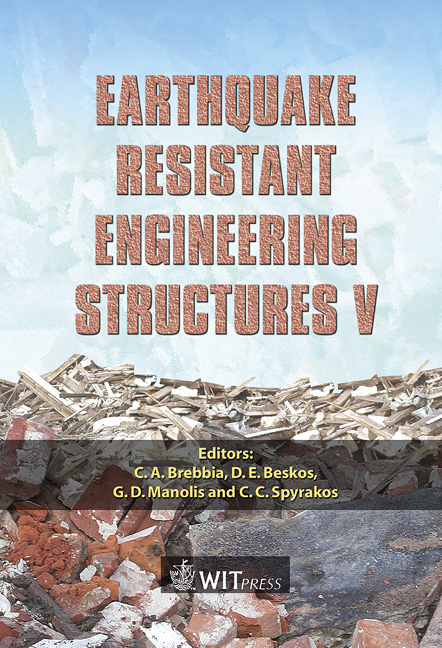Site Effect Evaluation In Sellano (Italy) By 1-D And 2-D Numerical Analyses
Price
Free (open access)
Transaction
Volume
81
Pages
10
Published
2005
Size
1,102 kb
Paper DOI
10.2495/ERES050081
Copyright
WIT Press
Author(s)
P. Capilleri, G. Lanzo, M. Maugeri & A. Pagliaroli
Abstract
The 1997–1998 Umbria-Marche seismic sequence induced severe damage to the historical centre of Sellano (Perugia, Italy). During the long aftershock sequence two temporary accelerometric stations, about 300m apart, provided several ground motion records. These data allowed us to investigate the amplification of surface motion which can essentially be ascribed to local seismic effects. A site response study of the historical centre of the village was carried out by means of 1-D and 2-D numerical analyses to clarify the role played by the stratigraphic and topographic effects. The applicability of 1-D and 2-D models was examined by comparing the recorded and calculated acceleration response spectra. 1-D response analyses seem to indicate a significant stratigraphic effect on the ground response. Conversely, 2-D response analyses have shown only moderate amplification effects due to surface topography, which somewhat improved the predictions of site response spectra. Keywords: 1997 Umbria-Marche earthquake, stratigraphic effects, topographic effects, 1-D and 2-D numerical analyses. 1 Introduction It is well recognised that local seismic effects can exert a significant influence on the distribution of damages during earthquakes. Traditionally, these effects have been studied by means of simple one-dimensional (1-D) models of seismic wave propagation, which take into account only the influence of the stratigraphic profile and soil/bedrock properties on the seismic response. Conversely, local
Keywords
1997 Umbria-Marche earthquake, stratigraphic effects, topographic effects, 1-D and 2-D numerical analyses.





